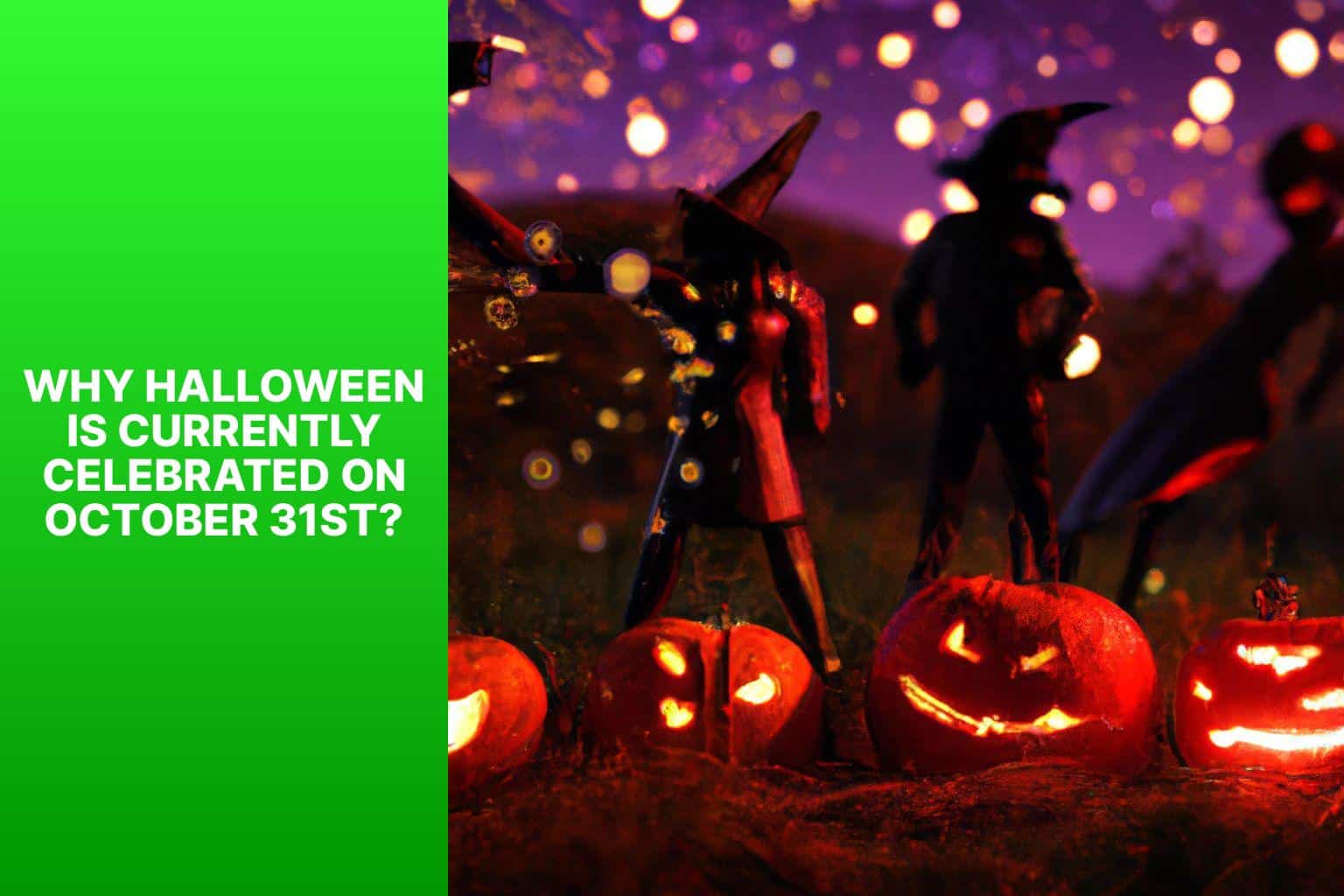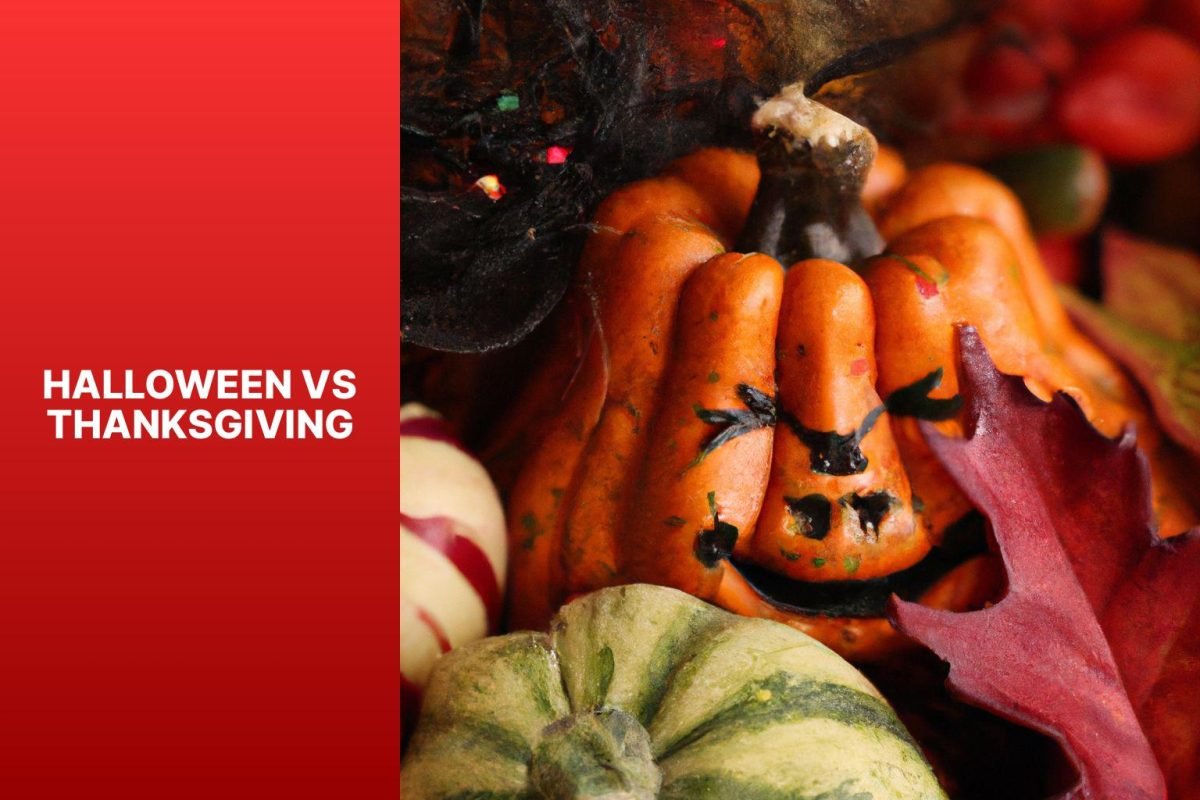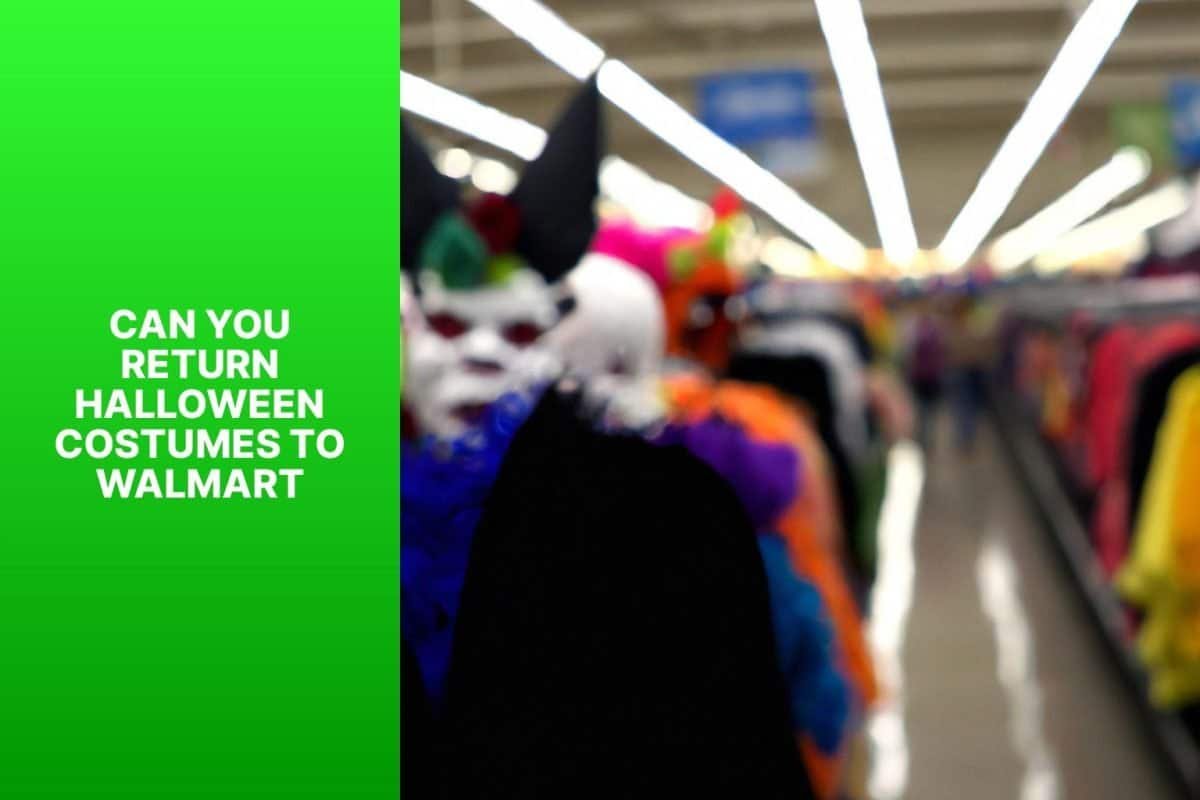Halloween, a widely celebrated holiday, is traditionally observed on October 31st each year. This date has historical significance and is influenced by All Saints’ Day and All Souls’ Day. There has been a growing discussion about whether Halloween should be moved to a specific day of the week, such as Saturday. This article delves into the reasons behind this proposal.
Historically, Halloween’s roots can be traced back to ancient Celtic festivals, particularly the Gaelic festival of Samhain. It marked the end of the harvest season and the beginning of winter, where it was believed that the boundaries between the living and the spirit world were blurred.
The influence of All Saints’ Day and All Souls’ Day, which are observed on November 1st and November 2nd respectively in many Christian traditions, also played a role in shaping the date of Halloween. These holy days commemorated saints and honored the departed souls, intertwining with the existing traditions of Samhain and eventually leading to the modern-day Halloween celebrations.
Celebrating Halloween on a weekday presents numerous challenges and disadvantages. Limited time for festivities, difficulty for working parents and families to fully participate, and safety concerns for children are among the common issues faced when Halloween falls on a weekday.
Therefore, some proponents argue that moving Halloween to a specific day, like Saturday, would offer several advantages. Enhanced safety for trick-or-treating, extended time for celebration and festivities, and increased opportunity for community engagement are among the reasons put forward for this change.
As with any proposal, there are potential obstacles and counterarguments to consider. Disruption to religious observances and the economic and commercial implications of altering Halloween’s date are some of the challenges that need to be addressed.
By exploring these arguments and examining the potential benefits and challenges, we can delve deeper into the discussion of whether Halloween should be on a Saturday and evaluate how this change could impact the way we celebrate this beloved holiday.
Key takeaway:
- Halloween on a Saturday enhances safety for trick-or-treating: By having Halloween on a Saturday, children can go trick-or-treating during daylight hours, reducing the risk of accidents and improving supervision.
- Halloween on a Saturday allows for extended time for celebration and festivities: Families and communities can fully enjoy Halloween with more time available on a weekend, providing opportunities for parties, decorating, and engaging in fun activities.
- Halloween on a Saturday promotes community engagement: With Halloween falling on a Saturday, it encourages neighbors to come together, organize community events, and foster stronger relationships, creating a sense of belonging.
Why Halloween is Currently Celebrated on October 31st?

Photo Credits: Rickyshalloween.Com by Jesse White
Why is Halloween celebrated on October 31st? Let’s dig into the historical background of this spooky holiday and explore the influence of All Saints’ Day and All Souls’ Day. Uncover the origins and traditions that have shaped Halloween’s current date, and discover the fascinating historical context behind this widely celebrated event.
Historical Background of Halloween
Halloween has a fascinating historical background that dates back centuries. It originated from the ancient Celtic festival of Samhain, which marked the end of the harvest season and the start of winter. During Samhain, it was believed that the barrier between the living and the dead was blurred, allowing spirits to roam freely on Earth.
With the arrival of Christianity, the festival evolved into All Saints’ Day, also known as All Hallows’ Day, which honored saints and martyrs. The night before, known as All Hallows’ Eve, eventually became Halloween.
In addition, Halloween traditions in the Middle Ages merged with the commemoration of All Souls’ Day, a day to remember the deceased. People would dress up in costumes and go door-to-door, offering prayers for the departed in exchange for food or treats.
Over time, Halloween spread worldwide and underwent cultural adaptations. In the United States, Irish and Scottish immigrants brought their Halloween customs, which blended with American traditions like pumpkin carving and trick-or-treating.
Understanding the historical background of Halloween allows us to appreciate the associated traditions and customs. It connects us to ancient beliefs and practices, reminding us of the cultural and historical significance behind the festivities we enjoy today.
As we continue to celebrate Halloween, let us appreciate the historical roots that have shaped this holiday and embrace the opportunity to learn and share its fascinating background with others.
The Influence of All Saints’ Day and All Souls’ Day
The influence of All Saints’ Day and All Souls’ Day is significant in shaping the traditions and customs of Halloween. These religious observances, namely All Saints’ Day (also known as All Hallows’ Day) celebrated on November 1st and All Souls’ Day on November 2nd, play a crucial role. All Saints’ Day honors all the saints and martyrs, while All Souls’ Day is dedicated to praying for the souls of the faithful departed and remembering deceased loved ones. These traditions are deeply intertwined with Halloween.
One can observe the influence of All Saints’ Day and All Souls’ Day in Halloween customs such as dressing up in costumes. This practice originated from the medieval tradition of masquerading to honor saints and souls. Another connection between Halloween and these religious observances is the act of visiting graveyards during the Halloween season.
Understanding the historical significance of All Saints’ Day and All Souls’ Day provides a deeper appreciation for the cultural and spiritual origins of Halloween. The influence of these religious observances continues to shape the celebration and observation of this beloved holiday.
Challenges and Disadvantages of Celebrating Halloween on a Weekday
Celebrating Halloween on a weekday comes with its fair share of challenges and disadvantages. Limited time for festivities, the difficulty faced by working parents and families, and the safety concerns for children are some of the aspects we’ll be exploring in this section. So, if you’ve ever wondered why Halloween being on a Saturday would make a difference, buckle up as we uncover the various obstacles that arise when this spooky holiday falls on a regular work or school day.
Limited Time for Festivities
Limited time for festivities can be a challenge when celebrating Halloween on a weekday. The reasons for this include the limited time parents and children have to prepare costumes and decorations after school and work, as well as rushed trick-or-treating with less time for children to go door-to-door in their neighborhoods. Festive activities like pumpkin carving, haunted houses, and Halloween parties must be squeezed into just a few hours.
Last Halloween, my family and I experienced this limited time for festivities on a Wednesday. We rushed home from work and school and quickly assembled our costumes and decorations. Due to the early sunset, we had to start trick-or-treating right away. Unfortunately, we had to cut our usual route short because we needed to be home before it got too late. Despite these time constraints, we still managed to have some fun. There was a sense of missing out on fully enjoying the Halloween spirit due to the limited time available.
Difficulty for Working Parents and Families
Halloween presents unique challenges for working parents and families, specifically in terms of time management and maintaining a work-life balance.
1. Limited Time for Festivities: Weekdays are already jam-packed with work and school obligations, leaving little room for Halloween preparations and celebrations. As a result, parents may find it challenging to assist their children with costume selection, decorating the house, and engaging in fun activities like pumpkin carving or baking spooky treats.
2. Difficulty in Managing Work-Life Balance: Working parents often struggle to strike a balance between their professional responsibilities and their children’s Halloween festivities. They may need to hurriedly rush home, hastily put together costumes, and then rush back out, leading to increased stress and potentially missing out on valuable quality time with their little ones.
3. Safety Concerns: The limited time available combined with busy schedules make it hard for parents to ensure the safety of their children during Halloween. With insufficient time to accompany their kids while they go trick-or-treating, the overall safety risks are heightened.
Pro-tip: To alleviate the difficulties faced by working parents and families, it is advisable to organize community events or parties during the weekend preceding or following Halloween. This enables parents to actively engage with their children without the added strain of weekday responsibilities.
Dangers and Safety Concerns for Children
Traffic accidents during Halloween pose an increased risk due to children walking on the streets at night. According to a study by Safe Kids Worldwide, child pedestrian fatalities double on Halloween night. There is also a concern about strangers approaching or interacting with children while they go door-to-door for trick-or-treating. It is crucial for parents to ensure children are accompanied by a responsible adult or stay in well-lit areas to minimize these dangers.
Ill-fitting costumes or those with long trailing fabrics can pose a tripping hazard, while masks may obstruct vision, increasing the risk of accidents. It is essential to choose safe and comfortable costumes for children to prevent any mishaps. In addition, parents should inspect their children’s candy before consumption, as there have been rare instances of tampered or unsafe candy distribution during Halloween.
Decorations can also pose significant hazards to children. Jack-o’-lanterns with candles inside can cause burns, while hanging decorations can be a strangulation risk if not properly secured. To ensure children’s safety, it is advisable to use flameless LED candles or glow sticks instead of traditional candles in jack-o’-lanterns. Parents and guardians should properly secure decorations to avoid any potential dangers.
To mitigate these dangers and safety concerns for children during Halloween celebrations, it is important for parents and guardians to accompany young children during trick-or-treating and keep them in well-lit areas. They should choose safe and well-fitting costumes that provide good visibility. It is crucial to educate children about stranger danger and emphasize the importance of not entering unfamiliar homes. Inspecting all candy before allowing children to eat it is also a crucial safety measure.
By following these safety measures, children can enjoy Halloween while minimizing the risks associated with traffic accidents, stranger danger, costume hazards, candy safety, and decorations.
The Case for Halloween to be on Saturday

Photo Credits: Rickyshalloween.Com by Elijah Young
Looking to make Halloween even more thrilling? Get ready to dive into “The Case for Halloween to be on Saturday.” We’ll uncover the benefits of this proposed change, including enhanced safety for trick-or-treating, extended time for celebration and festivities, and the opportunity for increased community engagement. Let’s explore how a simple shift in the day of the week could take this spooky holiday to a whole new level of excitement and enjoyment!
Enhanced Safety for Trick-or-Treating
Enhanced safety for trick-or-treating is essential to ensure a fun and enjoyable experience for children. By implementing the following measures, parents can have peace of mind and children can celebrate Halloween in a secure environment.
1. Adult supervision: One of the most crucial aspects of trick-or-treating safety is ensuring responsible adults accompany children. These adults can guide them across roads, watch out for potential hazards, and overall ensure their safety.
2. Well-lit areas: Encouraging trick-or-treaters to visit well-lit neighborhoods and houses is another important step towards enhanced safety. Well-lit areas reduce the risk of accidents and increase visibility, allowing children to navigate their surroundings more easily.
3. Reflective costumes or accessories: Halloween costumes should incorporate reflective elements to make children more visible, particularly after sunset. This can be achieved by adding reflective strips or choosing costumes with reflective accents.
4. Safe routes: Planning a designated route in familiar neighborhoods is key to keeping children in safe areas. Avoiding busy roads or poorly lit areas helps minimize the risk of accidents and potential danger.
5. Candy inspection: Parents should take the time to inspect treats for any signs of tampering or potential hazards before allowing children to consume them. This step ensures that children only consume safe candies and reduces the risk of any unexpected health issues.
6. Neighborhood Watch programs: Engaging in neighborhood watch programs can significantly enhance safety during Halloween. These programs increase awareness and coordination among residents, creating a sense of community and ensuring everyone is vigilant and prepared.
By incorporating these measures, the safety of trick-or-treating can be greatly enhanced. This not only provides peace of mind for parents but also allows children to fully enjoy the festive occasion without unnecessary risks.
Extended Time for Celebration and Festivities
The extended time for celebration and festivities on a Saturday is crucial for Halloween. It allows for a prolonged enjoyment period and participation in activities.
An extended time for celebration means people can fully immerse themselves in the Halloween spirit. They can take their time decorating their homes and setting up displays without feeling rushed, providing a more immersive experience for all.
With more time available, people can plan and attend multiple Halloween parties and events. This is especially beneficial for families with children as they can visit multiple neighborhood gatherings or engage in community activities without time constraints. It also enables the organization of larger gatherings and themed parties, promoting a stronger sense of community.
An extended timeframe allows for a wider range of festivities. In addition to traditional trick-or-treating, people can participate in activities such as haunted house visits, costume contests, pumpkin carving competitions, and scary movie marathons. This diversity of celebration options enhances the overall Halloween experience for everyone involved.
Opportunity for Community Engagement
Celebrating Halloween on a Saturday provides a great opportunity for community engagement. Families, neighbors, and parents can come together to create a sense of togetherness and belonging. They have more time for activities like Halloween parades, costume contests, and neighborhood gatherings. These events promote camaraderie and give families an opportunity to meet and build stronger bonds with their neighbors.
During community Halloween events, people can participate in games, pumpkin carving contests, and haunted house tours. These activities entertain and involve community members, while also providing a platform for sharing ideas, creating memories, and fostering unity.
Celebrating Halloween on a Saturday allows for greater involvement from local businesses and organizations. They can offer special promotions, themed menus, and host events like movie screenings or dance parties. This engagement not only boosts the local economy but also instills a sense of pride in the community.
Potential Obstacles and Counterarguments

Photo Credits: Rickyshalloween.Com by Eugene Campbell
Potential obstacles and counterarguments arise when considering why Halloween should be on a Saturday. These include the disruption it may cause to religious observances and the economic and commercial implications it might entail. Balancing the desire for a weekend celebration with the concerns of different communities and industries can be a complex task. Let’s explore these potential obstacles and counterarguments in more detail, shedding light on the various perspectives surrounding this debate.
Disruption to Religious Observances
Disruption to Religious Observances
Halloween on a Saturday can disrupt religious observances. Some religious communities have activities or services on Saturdays, such as Sabbath services for certain Christian denominations. Holding Halloween festivities on this day can create a conflict for individuals who want to participate in both religious activities and Halloween events.
For religious families who follow strict religious practices, Halloween may conflict with their beliefs or traditions. Some religious groups see Halloween as a holiday with pagan origins or associations that contradict their teachings. Participating in Halloween activities on a religious holiday can be seen as contradictory or disrespectful.
The disruption to religious observances can also affect the overall atmosphere and spirit of Halloween. In communities with a large religious population, the absence of religious participants in Halloween celebrations can make the atmosphere less lively and inclusive.
Therefore, when deciding to have Halloween on a Saturday, it is important to recognize and address the potential disruption to religious observances. Any decision should consider the religious diversity and traditions of the community to ensure that individuals of all faiths can fully participate in both their religious practices and Halloween festivities.
Economic and Commercial Implications
The economic and commercial implications of celebrating Halloween on a weekday are significant. A table illustrates some impacts:
| Economic and Commercial Implications | Description |
| Decreased consumer spending | Halloween falling on a weekday may result in people spending less on festivities and celebrations due to time constraints and work commitments. |
| Limited sales for Halloween-related businesses | Costume stores, party supply shops, and other businesses relying on Halloween sales may see lower revenue if the holiday is not on a weekend. |
| Reduced foot traffic for retail establishments | If Halloween is celebrated during the week, fewer people may visit malls and shopping centers to purchase costumes, decorations, and treats. |
| Decreased demand for seasonal jobs | Less emphasis on Halloween festivities during the week may lead to lower demand for temporary job opportunities in the holiday-related industry. |
| Impact on the entertainment industry | Halloween-themed events, haunted houses, and amusement parks may experience lower attendance and revenue if the holiday is not on a Saturday, impacting profitability. |
| Decreased advertising and marketing effectiveness | Businesses promoting Halloween-related products and services may struggle to capture consumers’ attention amidst their weekday routines, resulting in lower sales and profits. |
These economic and commercial implications emphasize the importance of considering the impact of celebrating Halloween on a weekday. By moving Halloween to Saturday, businesses can benefit from increased consumer spending, boost revenues for Halloween-related industries, and create a more vibrant and thriving holiday market.
Frequently Asked Questions
1. Why should Halloween be on a Saturday?
Moving Halloween to a Saturday would benefit kids and parents by allowing more time to celebrate and eliminating concerns about bedtimes and homework. It would be healthier for kids and parents, as they wouldn’t have to deal with the chaos of getting ready for trick-or-treating on a school night.
2. Would moving Halloween to a Saturday improve safety?
Yes, it could. A study published in 2018 found that pedestrians had a 43% greater chance of being in a fatal traffic accident on Halloween compared to other nights near that date. Moving Halloween to a weekend with less work traffic could improve safety by reducing the risk of accidents.
3. How would moving Halloween to a Saturday make the holiday more relaxing, safe, and fun?
Moving Halloween to a weekend would allow for more parades and make the holiday more relaxing, safe, and fun. Trick-or-treating could begin earlier in the evening before nightfall, local authorities could block roads to protect busy neighborhoods, and families could celebrate together on a weekend holiday.
4. What impact would moving Halloween to a Saturday have on the economy?
Moving Halloween to the last Saturday of October would benefit the economy. It would generate more revenue from costume purchases, parties, and food and beverage consumption. Party City, for example, reported a $22 million decrease in sales when Halloween fell on a Monday compared to a Saturday. It would bolster local businesses and provide predictability from year to year.
5. What would happen to Halloween’s magic and mystery if the date is changed?
It is true that Halloween has its roots in historical traditions linked to October 31, and changing the date would diminish its magic and mystery for some. The benefits of allowing more time to celebrate and improving safety may outweigh the change in date.
6. Would all celebrations and traditions associated with Halloween be affected by moving it to a Saturday?
No, moving Halloween to a Saturday would mainly affect the date of official observance. The specific celebrations, traditions, and activities such as dressing up, trick-or-treating, and attending parties would still take place as usual, but they would happen on the last Saturday of October rather than October 31.














